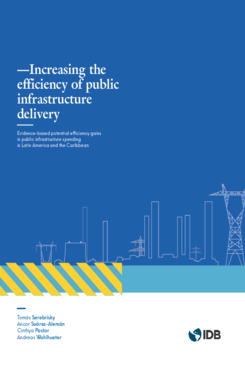Increasing the Efficiency of Public Infrastructure Delivery: Evidence-based Potential Efficiency Gains in Public Infrastructure Spending in Latin America and the Caribbean
Date
Oct 2017
The state of infrastructure in LAC is well below what it should be considering the region’s level of development—and the consequences are devastating. The state of infrastructure reflects both inadequate and inefficient spending. The region invests about 3.5 percent of its annual GDP in infrastructure—about 1.5 percentage points less than the 5 percent of GDP needed to meet the region’s needs. But increasing infrastructure spending is likely to be difficult given the weak economic outlook for the region. Having fewer resources available for investment forces countries to find ways to provide infrastructure services more efficiently. The focus therefore needs to be on increasing the efficiency of infrastructure investment. The present study identifies components and processes of the project cycle of infrastructure delivery that can be improved to generate efficiency gains. This study concludes that gains from increasing efficiency in LAC are considerable, stemming primarily from three sources: improving project selection and optimizing infrastructure portfolios, streamlining infrastructure delivery by reducing cost overruns and delays, and making the most of existing assets. Improvements in these areas could potentially save as much as 40 percent of infrastructure investment, more than 1 percent of regional GDP. The magnitude of potential efficiency gains in public infrastructure spending illustrates that it is not necessarily more investment what is needed, but more efficient investment to close the prevailing infrastructure gap in LAC.




